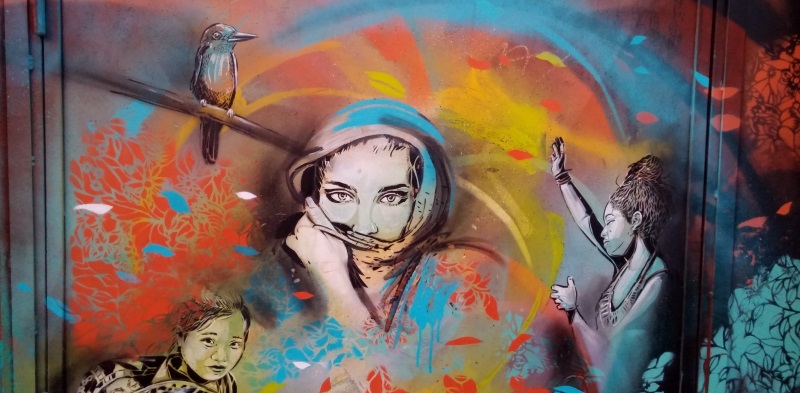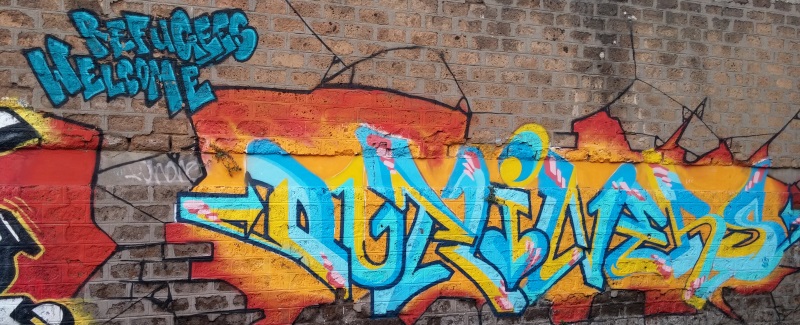NOTE: As I was preparing to publish the following, we received word that the Baobab refugee center has been raided by Italian police. People were taken into police custody for interrogation. So far it seems too early to explain why this happened. I will try to obtain reliable information and share it as soon as possible. -- Robert
Dear Wilson,
There were at least four languages being spoken in the kitchen of the Baobab refugee center of Rome Nov. 19.
Let's see. French, Italian, Amharic (Ethiopian), English, Arabic...make that five.
And there were probably other languages or dialects in the alley, where families, including toddlers, anticipated their evening meal. The occasion was Ann Anagnost's University of Washington students preparing dinner for well more than 80 refugees, mostly African, I believe. Sorry about my lack of clarity. It was us and the refugees, along with some young Italian volunteers who were there to help, and clearly communicating and understanding what I was observing was a bit of a challenge.
The UW students were preparing a green salad and crafting a version of Ethiopian lasagne from scratch. (If the term "Ethiopian lasagne" makes you wonder, you have to remember that Mussolini thought Ethipoia would be a fun country to conquer, so Italy developed a presence in Ethiopia, making Italy a natural destination for Ehiopians to flee to two generations later.)
Outside, in the alley, toddlers and young adult men were playing with a few of your cousins. I tagged along for the event, bringing three One World Futbols with me. Shortly after we arrived, I took one into the alley, stabbed it with a knife to demonstrate its resilience, and then left it with the individuals who were milling around in the alley or sitting on the few chairs that were left there.
Over the course of the afternoon the ball became grimier and grimier. A couple times it rolled down the alley into the street and had to be retrieved from traffic. One time a hefty kick put it over the wall and a refugee asked a man in the adjoining lot to move his truck so we could get it back.
The futbol continued to entertain well into the evening, when darkness had fallen and overhead lights illuminated only part of the alley.
Inside, the students worked on the meal.
 |
University of Washington Cultural Anthropology Professor Ann Anagnost surveys the makings for salad, some of which she carted to Baobab in her carry-on flight luggage. |
 |
The salad assembly line. All but two of the visiting University of Washington students were women. They are in Rome fall quarter for Professor Anagnost's class on the anthropology of food. |
 |
"It takes a village" -- to make good Ethiopian lasagne. |
 |
Now it's ready. The students cut portions for more than 80 servings. In 20 minutes it will all be gone. Only a few of the UW students even got a taste. It was all for the refugees. |
 |
Mohamad Sanoug, a Moroccan, was one of the first to be served. Moments later he was no longer eating alone. |
More Baobab snapshots:
 |
A banner attached to the outside wall of the Baobab refugee center in Rome |
 |
A wall hanging at the Baobab refugee center in Rome. |
 |
A mural in the alley behind the Baobab refugee center in Rome |
 |
"Refugees welcome," is the title for this gaffiti on a wall in the alley at the Baobab refugee center in Rome. |
Here's a link to a video of a One World Futbol in use at the Baobob refugee center:
https://www.youtube.com/watch?v=F5fNeiYjn8I&authuser=0
Love,
Robert





No comments:
Post a Comment